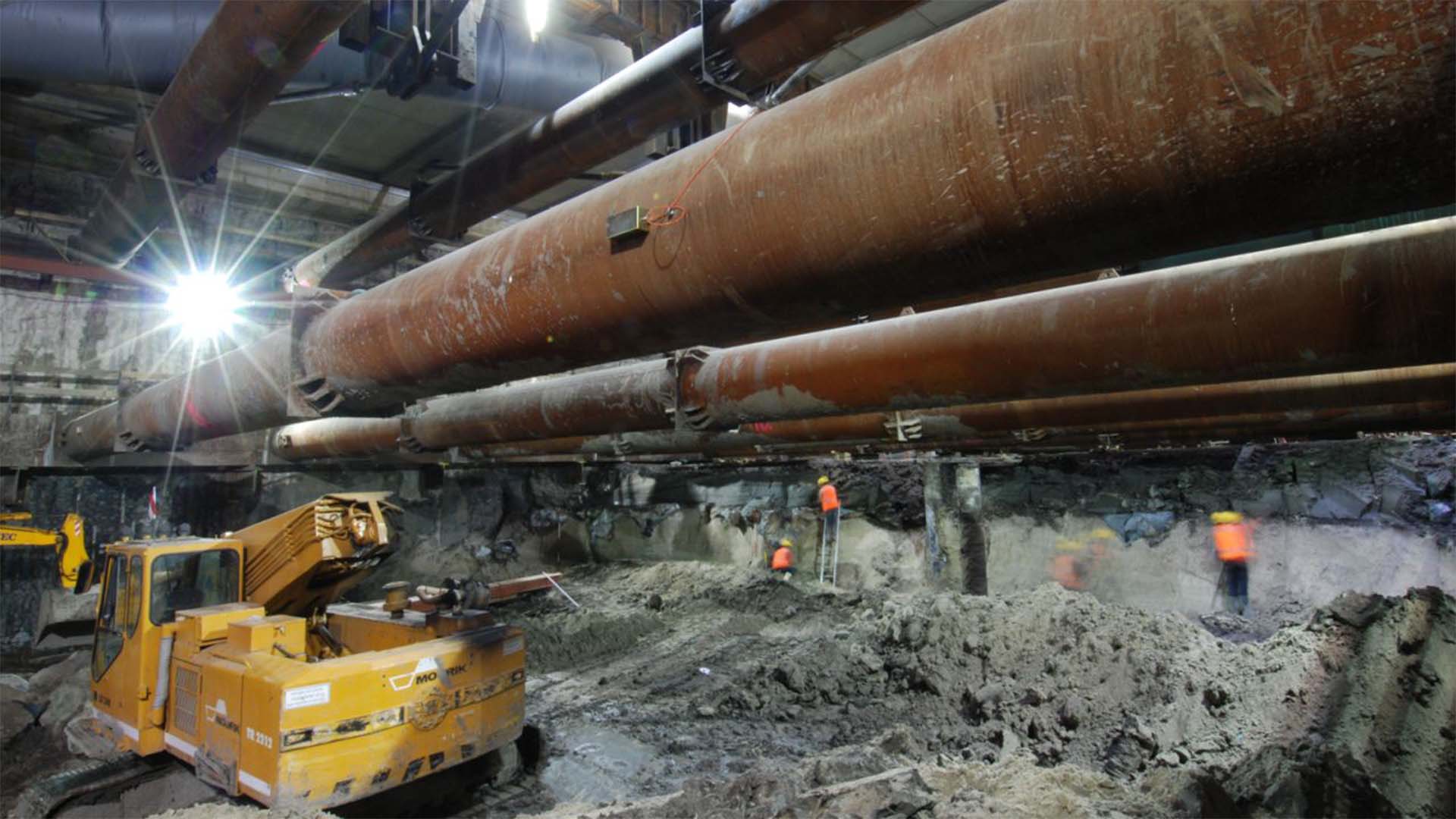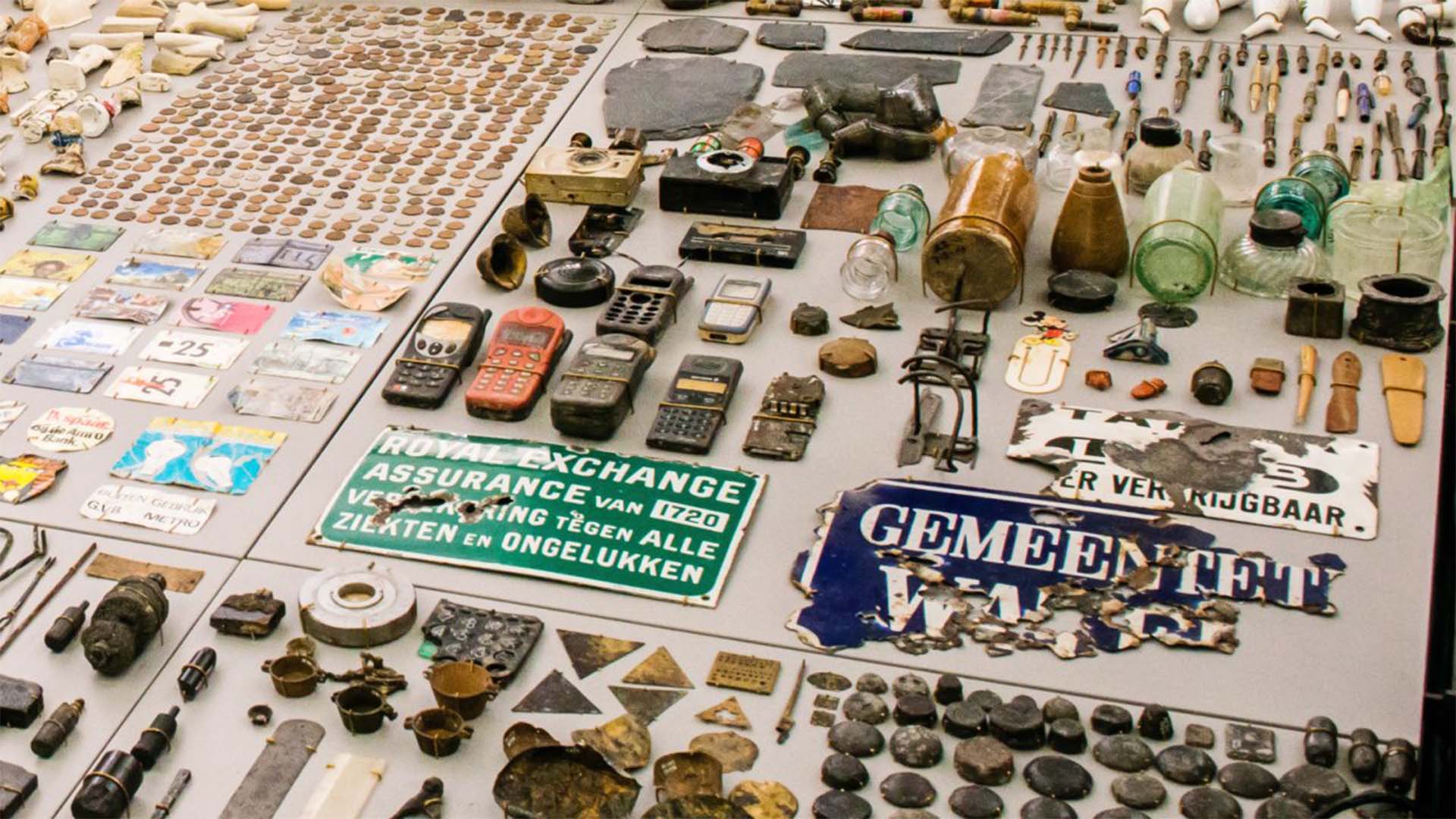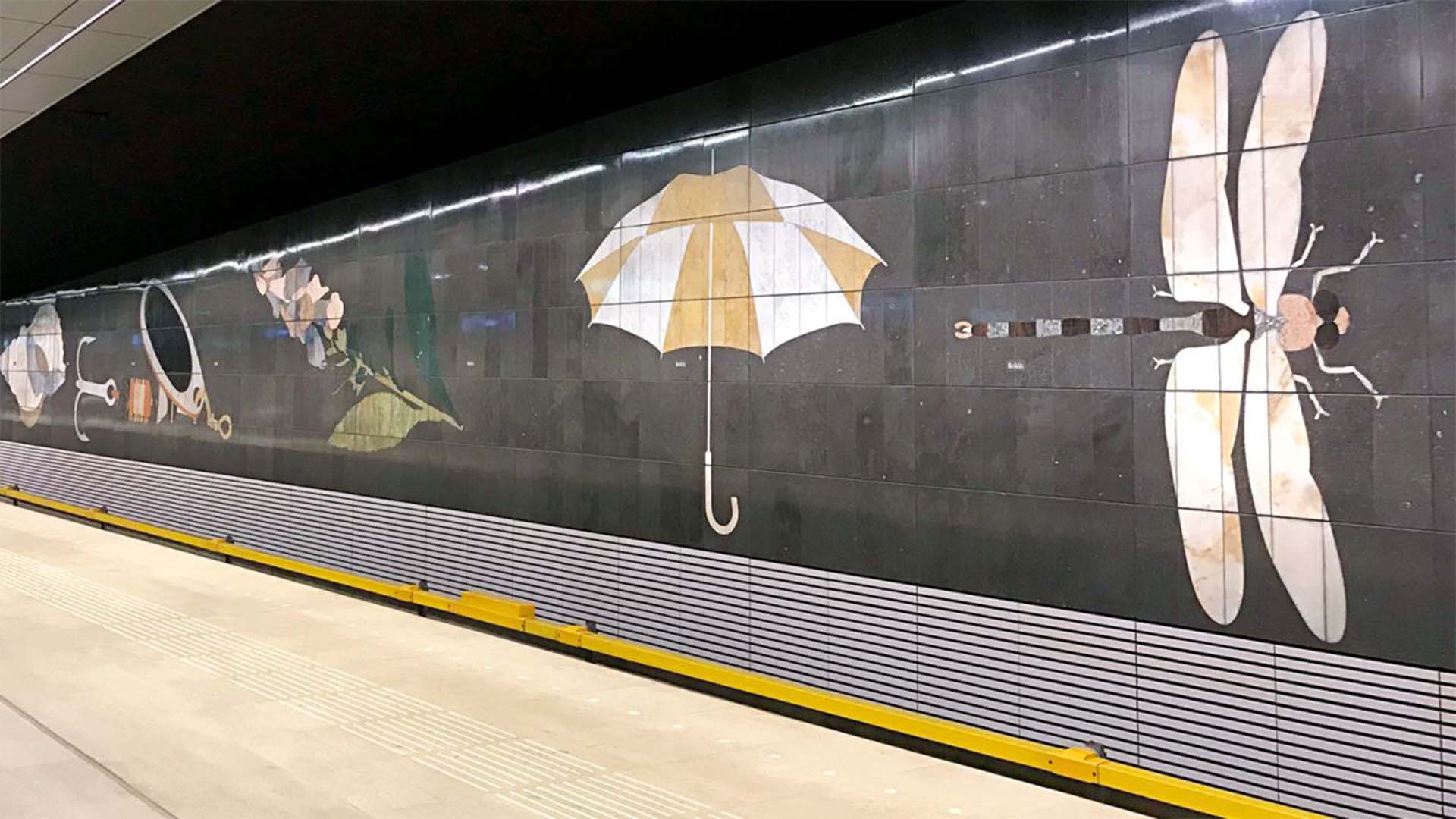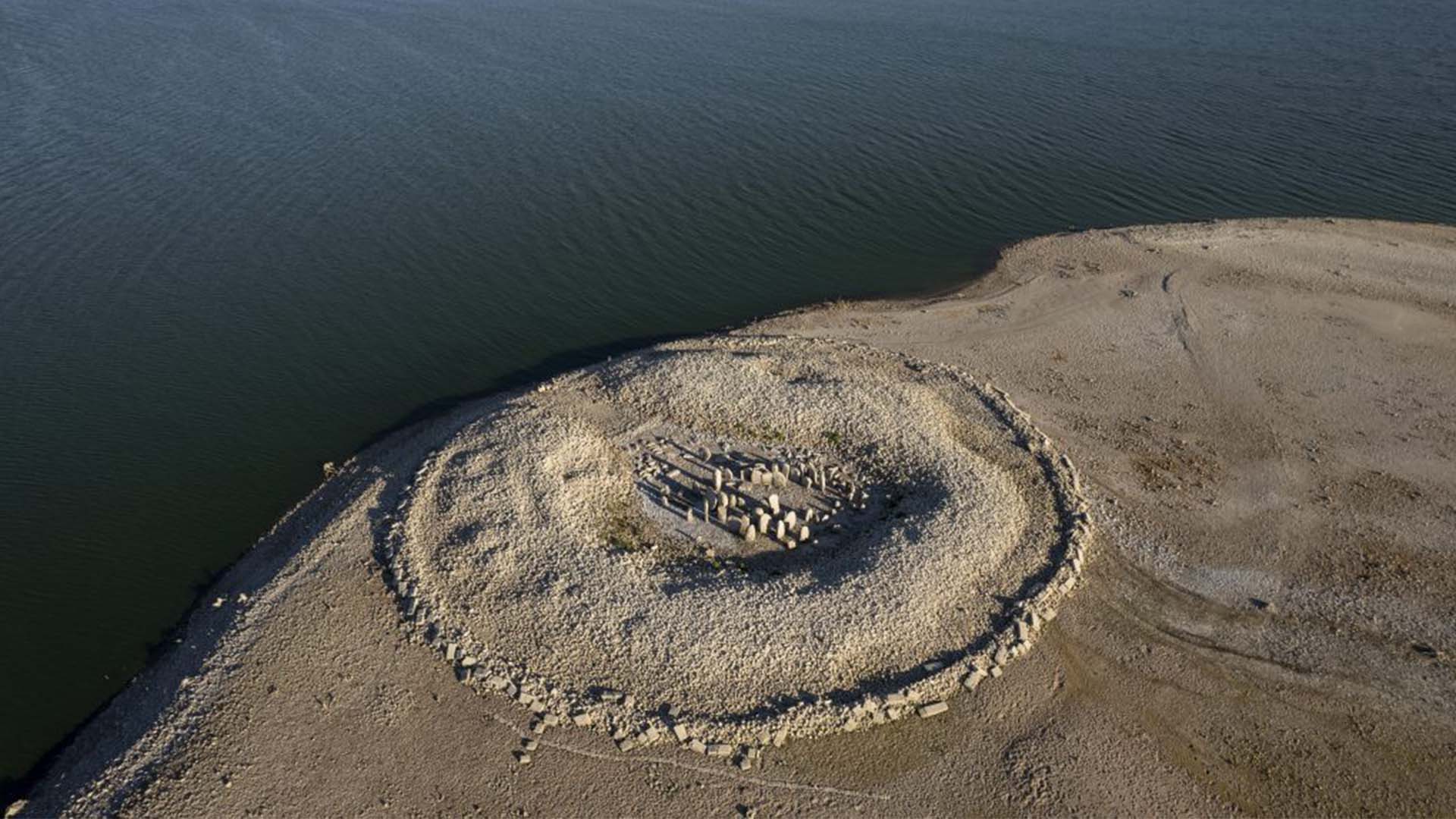Building Amsterdam’s North-South metro line was a 15-year precision operation that involved targeted digs beneath the foundations of centuries-old architecture. The potentially hazardous work involved tasking archeologists to sift through the soft mud to discover any history disturbed by the engineering project. Today, the spoils of their work can be found at Rokin station, one of eight stops on the route that doubles as an impressive underground archeological museum with nearly 10,000 artifacts on display.

The station is a testament to the labor of the archeologists and engineers involved in the project, with two glass cases positioned between the escalators which include a rotating display of the found artifacts. A significant amount of the artifacts were found in and around Rokin, a neighborhood that lies along the city’s Amstel river. Waterways tend to accumulate large quantities of objects over time and according to Peter Kranendonk, one of the two senior archeologists leading the excavations, the Amstel riverbed was the same, “The sheer mass of material we unearthed during the construction of the North-South line was extraordinary… The construction gave us a unique opportunity to excavate under the city up to a depth of 30 meters.”
The artifact displays at Rokin are organized into several themes. For example, in the north display focuses on objects related to food, science and technology, communication, arms and armor, personal artifacts and clothing, games, and recreation. The south display, on the other hand, includes objects related to transport, buildings and structures, interiors and accessories, and craft and industry.
“Some objects, like the 500-year-old coins, have a direct story behind them,” says Kranendonk. “On the basis of the finds, we can also say something about the use of an area,” he adds.

The oldest items uncovered were mollusk shells dating over 115,000 years ago. In one spot at Rokin, unearthing a mass of chopped animal bones pointed to the existence of a butchery nearby in the 17th and 18th centuries. In another spot, an abundance of furniture fittings hinted at the presence of a furniture maker’s shop in the 19th century.
“Prior to the excavation of these artifacts, the city had an archeological archive of only about 70,000 artifacts,” says Hoite Detmar, who served as the director of the North-South metro project from 2016 till its completion. “We found 10 times as many during the construction of the North-South line.”
Kranendonk elaborates on the rather unconventional excavation process behind these finds. “This was not a normal dig,” he says. “Usually, excavation is done before building. But in this case, the construction plans were already finalized. So we had to become part of the existing process. The civil engineering team were building and we were excavating.”
The archeology team had to work in a caisson, which is a large watertight concrete chamber, open at the bottom, from which water is kept out by air pressure and in which construction work is carried out underground or underwater. To acclimatize to the caissons, the teams were required to spend time in a pressure chamber before entering and after exiting, otherwise, they’d face the risk of “the bends”, or when gas bubbles form n the body potentially leading to paralysis.

“It was an interesting experience but also a bit frightening,” says Kranendonk. “The deeper you go, the more compressed the air gets. It’s like deep sea diving.”
Approximately 700,000 were recovered beneath Amsterdam during the project. To enable the public to engage with the Rokin displays, an online database of nearly 20,000 objects called Below the Surface was created. The walls of Rokin station, adjacent to the tracks, are also covered with stone mosaics by artists Daniel Dewar and Grégory Gicquel depicting 33 of the artifacts unearthed including a teapot, keyboard, pike, dice, butterfly, and more. There is even a mosaic of a crocodile representing an unearthed crocodile jaw, which was notable as it was an unusual find for this area of the world.
“When I travel to Rokin station, I see people really studying the archeological exhibits,” Detmar says. “I hope more people will take the metro to see this underground museum.”





